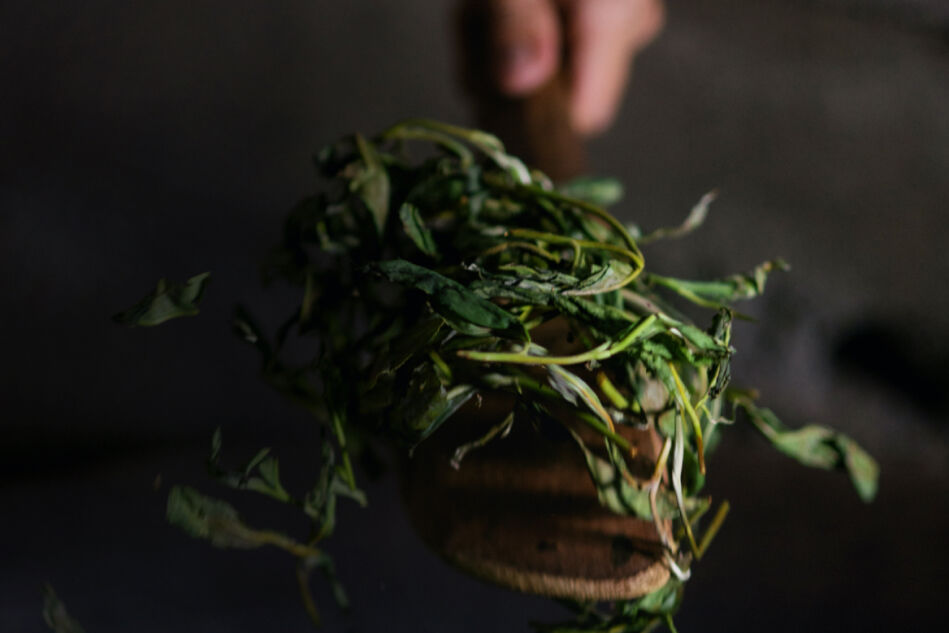All fired up.
Key aspects in the tea drying process.
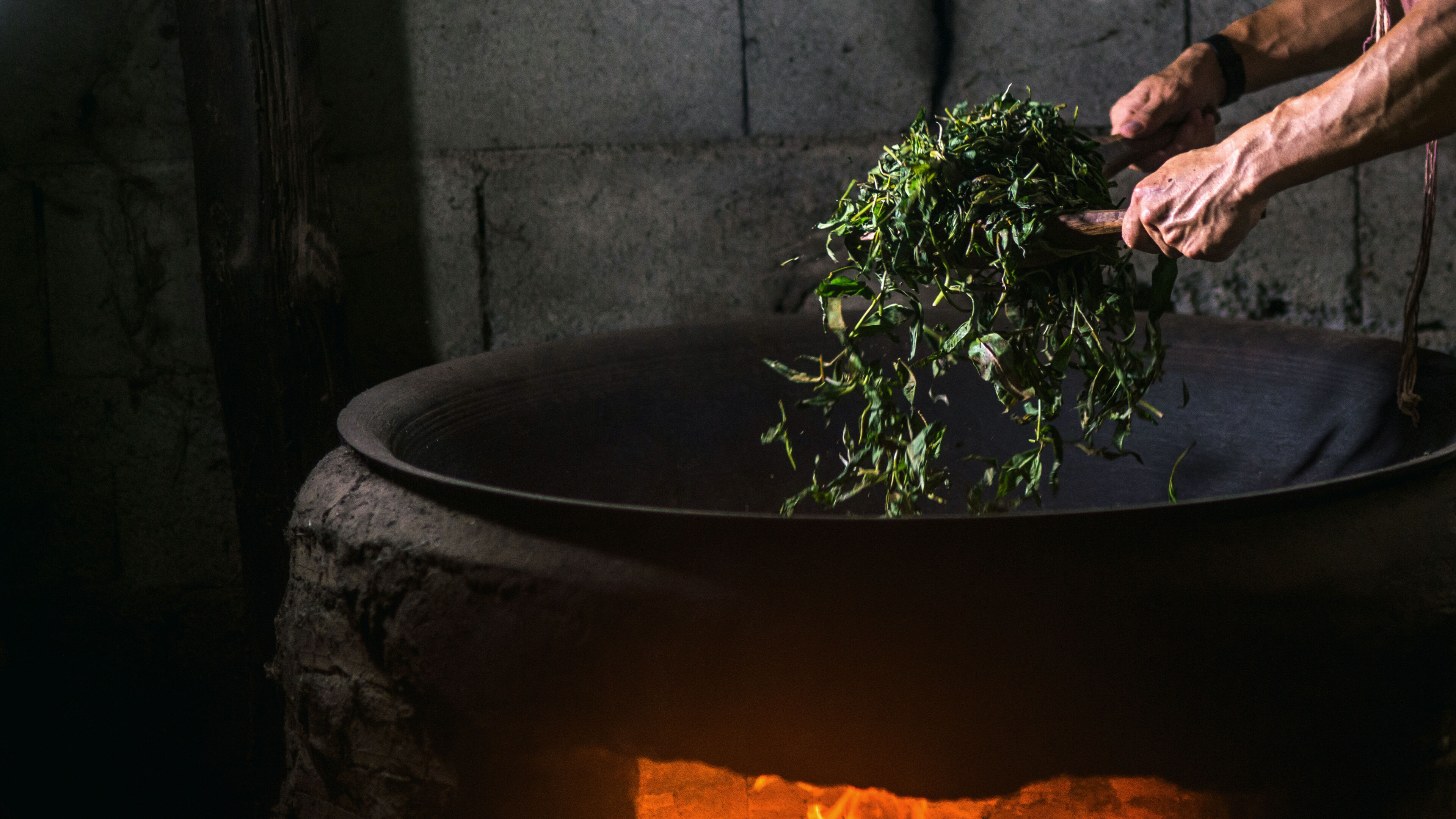
Home-made is best... or not? Do-it-yourself may have become a lot more popular in the last few months, but certain processes should rather be left for the experts. One example: tea drying. Although it may look simple at first glance, this is easier said than done. Because: A trained eye and perfect timing are key for the tea drying process.
Tea masters decide where tea is ready for drying, purely based on smell and feel. Laypeople would not really notice a difference and run the risk of the leaves becoming brittle damaged. We’re going to explain why drying tea leaves is necessary at all and why this is everything but a dry topic.
Why must tea be dried at all?
Theoretically, herbal teas can also be brewed from fresh leaves - hence the legitimate question: Why is it actually necessary to dry tea? There are two good reasons: shelf life and flavor. Fresh tea leaves will only keep for a few days, which is why you will seldom find any beyond the-tea-growing So, as part of the drying process, the leaves are preserved. Their moisture content is reduced to about three percent. This prevents the growth of microorganisms such as bacteria and mildew, which means that the leaves have longer shelf stability and can withstand transportation without being damaged. Besides the practical reasons, flavor also playa a role: not only does the drying process ensure that the tea can be kept for longer, it also enhances the intensity of the aroma.
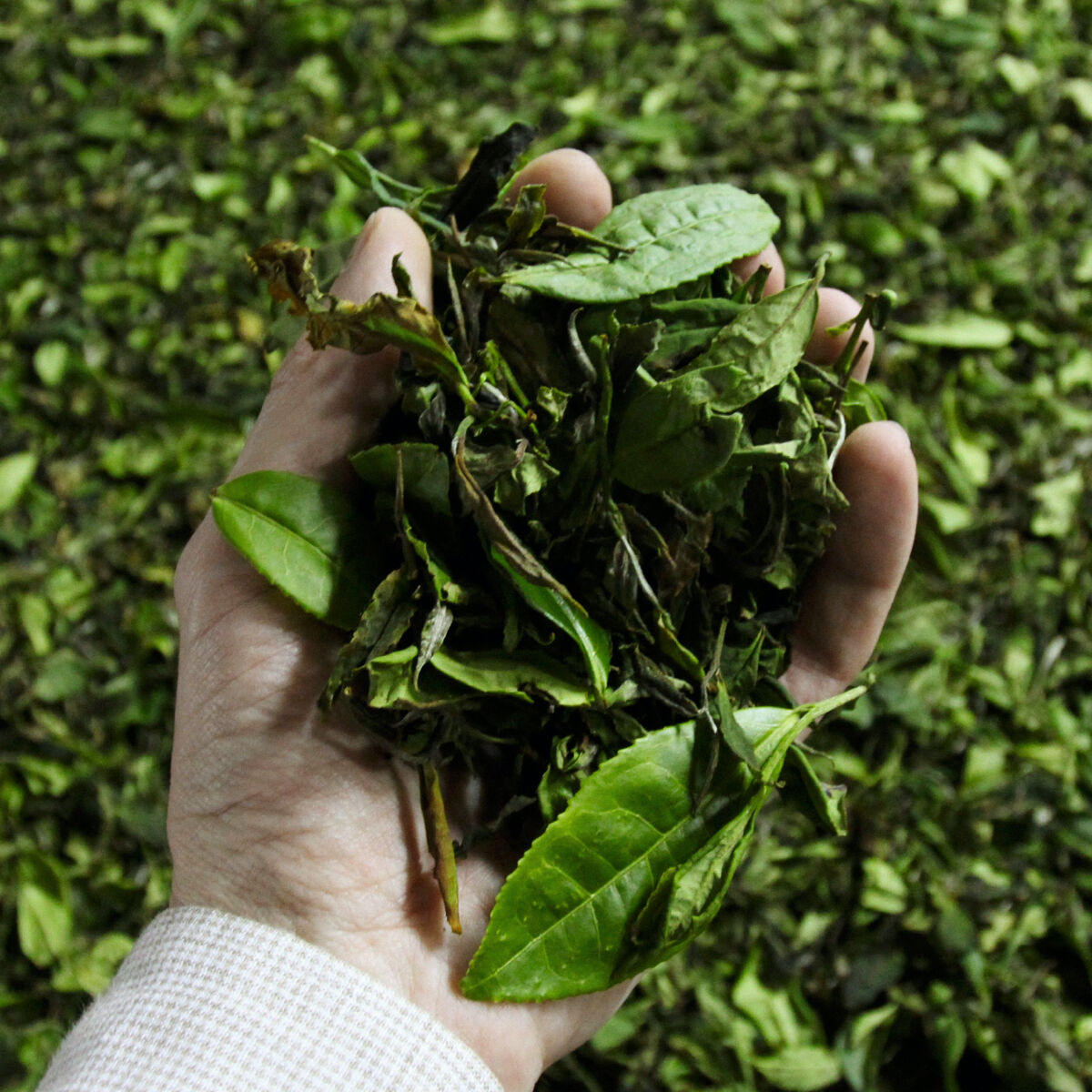
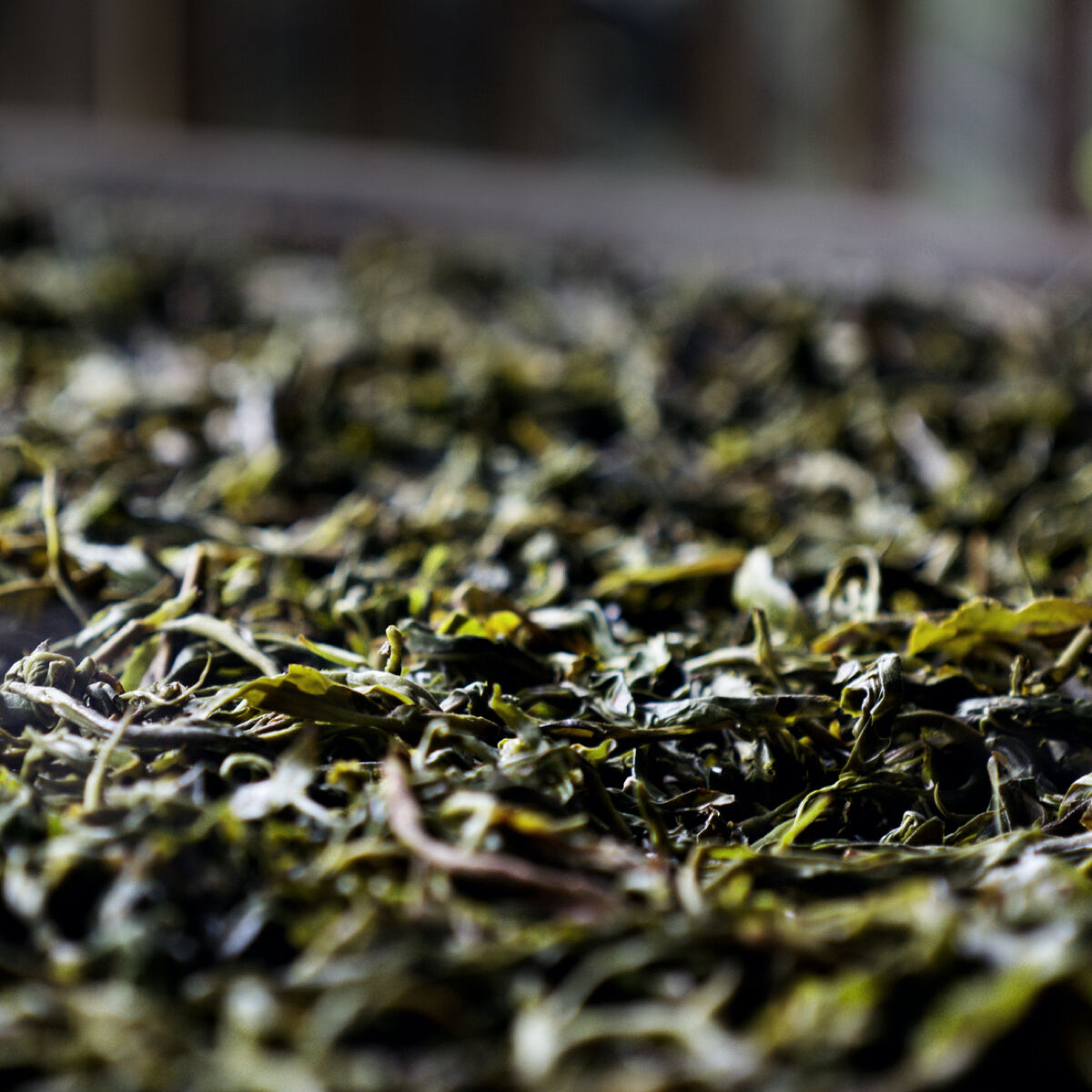
Balancing tradition and technology.
Originally, tea was dried using only the heat of the sun. The tea leaves were spread out on shallow bamboo baskets — and then it was a case of waiting, sometimes also for the right weather. Today, this method is not often used - for white or pu-erh tea, for example. The use of commercial drying machines or ovens is much more common. And although their functionality might be a little more complex, they are not dependent on the weather. In commercial dryers the tea leaves dry while conveyors move them trough a heat source in an endless chain. With oven drying, the tea leaves are loaded onto perforated trays and circulating hot air flows through the holes in the trays. The duration of the drying process depends on the method used. It can take a mere twenty minutes or also several days.
All fired up.
There are two further processing methods for enhancing the flavor of tea: finish and firing and roasting. Both methods are used relatively rarely and are mostly reserved for high-end teas. Finish firing involves heating the tea leaves in an oven at very low temperatures or in shallow bamboo baskets over hot coals. Although this does not necessarily change the aroma, it certainly intensifies it. Roasting, on the other hand, is meant to influence the flavor of the tea. The process is similar to that of finish firing, but results in a completely different cup of tea: roasting ensure a darker infusion and adds toasty, slightly burnt notes.
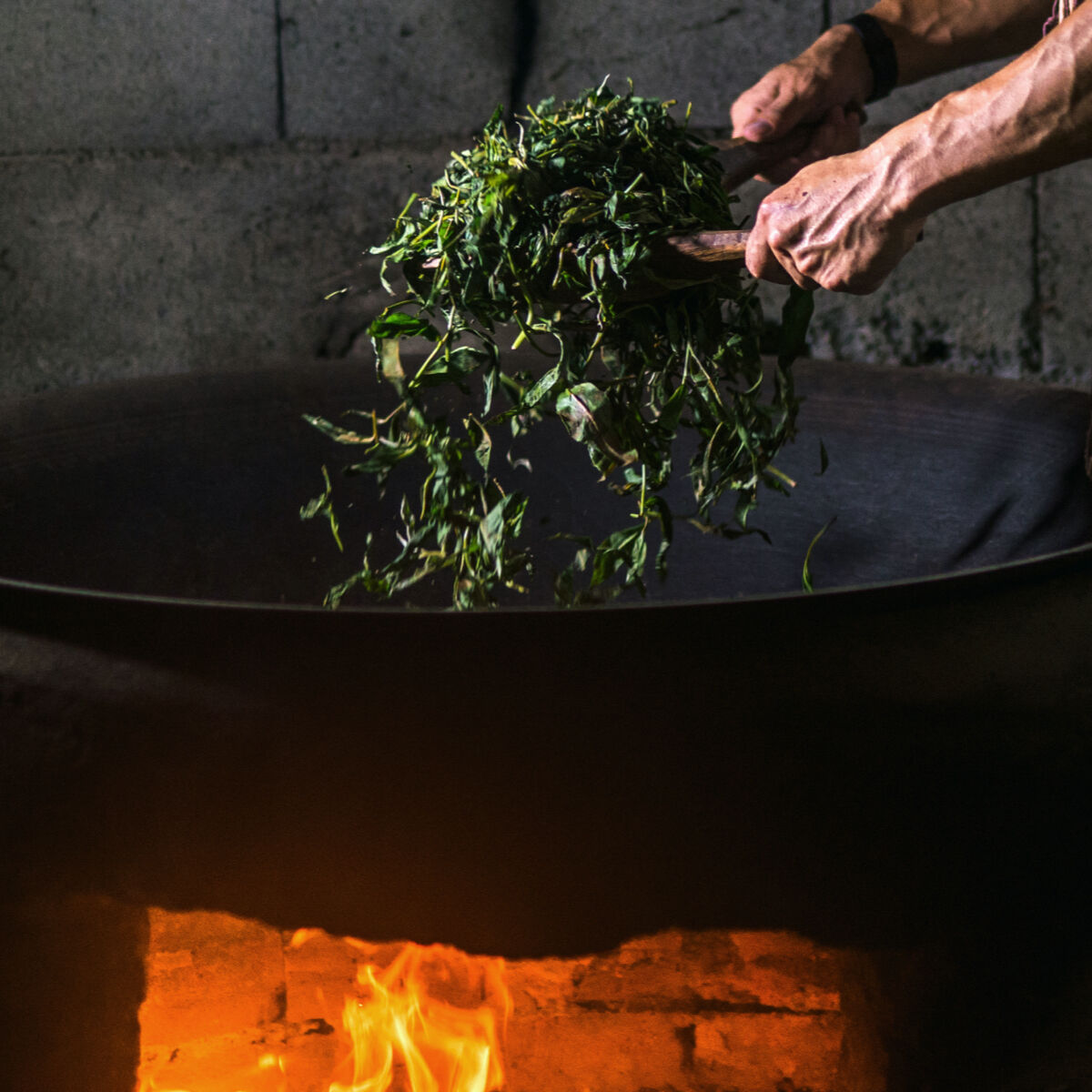
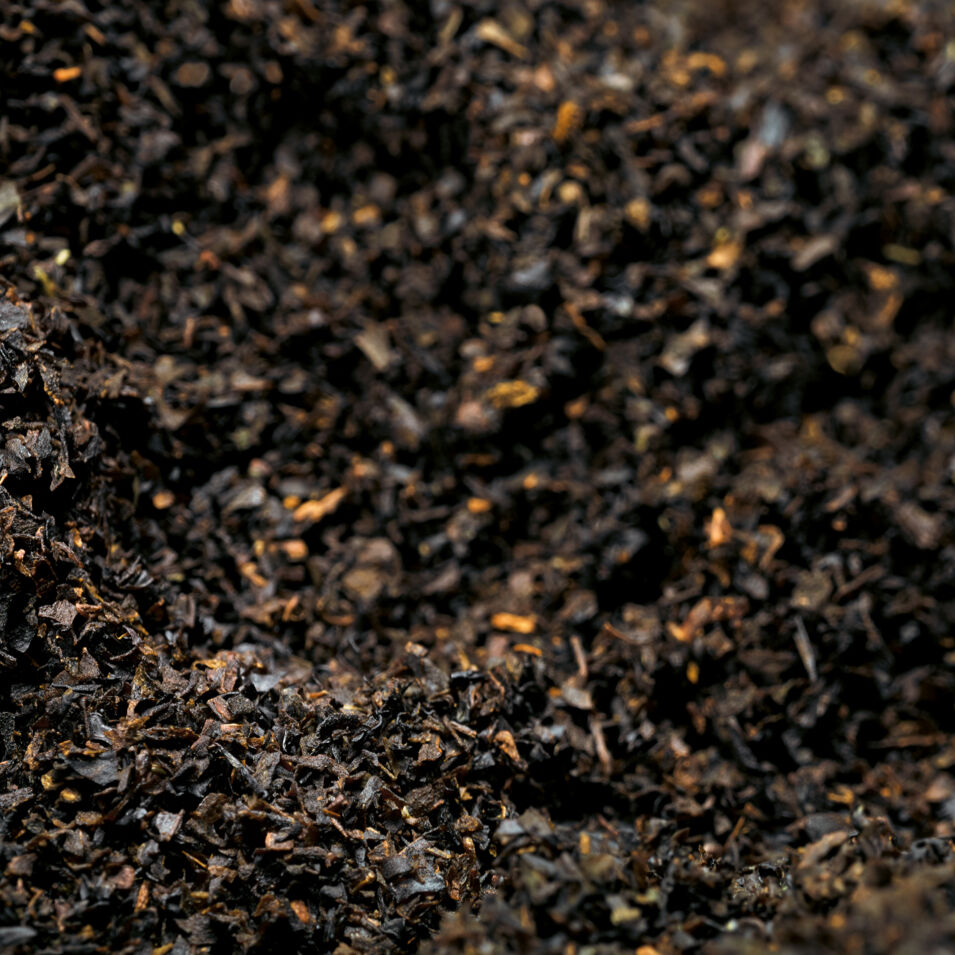
The grand finale.
Once the tea leaves have been completely dried, the grand finale of the tea production process starts: sorting. Mechanical vibrating sieves are used most often for this step. They separate the different sized tea leaves and leaf fragments from each other, and these are then graded accordingly. In general, we distinguish between the following grades:
Whole leaf, broken leaves with medium-sized leaves fannings with small leaf particles, and dust. Whole leaf tea consists exclusively of leaves that are intact and is thus considered the highest-grade tea. Whole leaf teas are also mostly picked by hand, because the tea pickers are more careful and adept than machines. Broken leaf tea, on the other hand, consists of leaves that have been broken by machine.
Compared to whole leaf tea, this grade ensures a darker brew because leaves that are broken release their ingredients more quickly in the water. This is also why broken leaf teas tend to become bitter and why they are often enhanced with a little milk. Fanning and dust teas consist of leaf particles that have resulted from the sorting process and are mainly used in tea bags. The general rule is: the smaller the leaf, the richer the brew.
It’s the little things that count.
From cultivation to harvesting to sorting – the same applies to each and every production step: even the slightest differences in the process can affect the quality, color and aroma of the tea. And this is why expertise and care are crucial for the production of tea. So that nothing less than the best ends up in the cup.
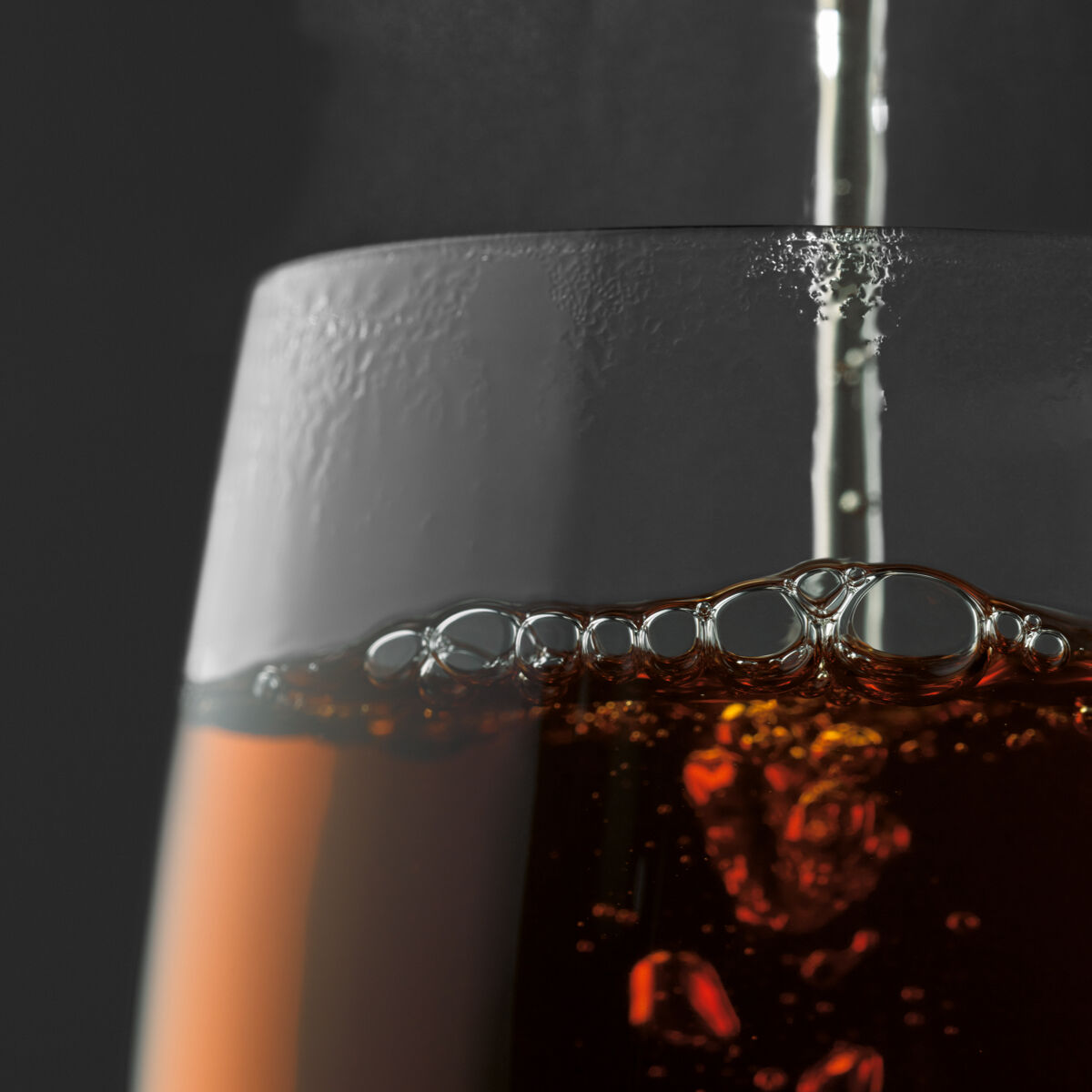
Sources:
https://www.teeladen-herzberg.de/teeherstellung
https://www.bzfe.de/lebensmittel/vom-acker-bis-zum-teller/tee/tee-verarbeitung/
https://teasteeping.com/how-to-dry-tea-leaves/
https://teaguardian.com/what-is-tea/green-tea-production-sun-drying/
https://www.steepbox.co.za/drying-in-tea-processing/
https://teasteeping.com/do-tea-leaves-need-to-be-dried/
More articles
More articles

Not less, but better.
Sharpening one's own awareness. Recognizing what one really needs. Giving things new appreciation. That's what minimalism is about. Following the motto 'less is more', more and more people are embracing the desire for clarity and order – even in the design of their homes.

Should we always follow our nose?
23,000 times – that´s how many breaths we take on average per day. And that means a multitude off different scents float in through our nose evoking a wide variety of reactions in us. In this article we´ll explain the psychological reasons behind this and why we should let our noses discover new things more often.
